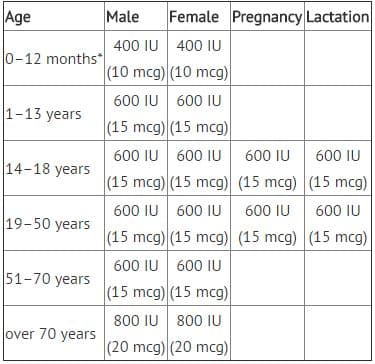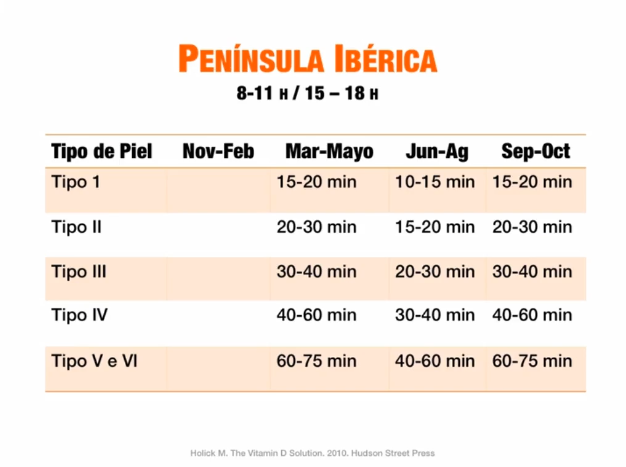Welcome to this new post! Today I come to talk to you about vitamin D, I’m sure you know or have heard about it, it’s quite famous, but what do you think if we analyze it in a more scientific way.
Let’s start by explaining what vitamin D is
It is a nutrient of organic nature present in very small quantities in food that helps develop specific and vital functions for the cells and tissues of the body.
It is classified as a fat-soluble vitamin; is absorbed with fat and eliminated through the liver, bile and feces. [1]
What is the purpose of vitamin D?
I could go on for a long time in this section since it has many functions, and it is suspected that most of them are still unknown to us, so I am going to highlight some of the most important ones.
- It participates in the metabolism of calcium and phosphorus. [1]
- Modulates the immune system (I.S., defense system). [1] [5]
- It regulates pancreatic insulin secretion (hormone that regulates blood sugar). [2]
- It contributes to the good functioning of the skeletal muscle. [1]
Lack of vitamin D
The lack of vitamin D alters the bone mineralization generating rickets in children and osteomalacia in adults, also an alteration of the homeostasis of the calcium can take place causing the following symptoms: neuromuscular irritability, numbness, paresthesias, tetany and sometimes convulsions. [1]
But the most common deficits that often go unnoticed are manifested in:
Weakness.
Chronic fatigue.
Obesity. [10]
Autoimmune diseases: type 1 diabetes, multiple sclerosis, rheumatoid arthritis, psoriasis, high blood pressure. [1] [2]
Cardiovascular diseases and mental illness. [2]
Some kidney and liver diseases.
Although the deficit in this case would be due to the inflammatory state present in these pathologies.
Groups at greater risk of deficiency: children and women of Asian or African origin in areas with poor sunlight, the elderly and homebound, babies raised at the breast in winter, strict vegetarians. [5]
Groups at risk of deficiency: the majority of the population. [6] [7]
How to obtain vitamin D
Now that we know how important it is, we need to know where we can get this vitamin D that can help us improve our health.
The sunshine vitamin, or as I would call it: the cholesterol vitamin
Many people believe that this vitamin is present in the sun, so they try to sunbathe often, although the vitamin would not be in the sun exactly but our skin has the potential to get it through ultraviolet light. The procedure summarized would be as follows:
- Ultraviolet light when it comes into contact with the skin transforms cholesterol into 7-hydrocholesterol. [1]
7-hydrocholesterol is converted to vitamin D3 (cholecalciferol). [1] - Cholecalciferol is transformed in the liver to 25-hydroxycholecalciferol (calcidiol, precursor of the active metabolite). [1]
- Some of the vitamin accumulates in the liver as calcidiol. [1]
- From the liver, calcidiol is transported by blood attached to DBP (Vitamin D Binding Protein) to the kidney or other stores (fat or muscle). [1]
- In the kidney, the activation of vitamin D is produced thanks to the action of parathormone (secreted by parathyroids) transforming 25-hydroxycholecalciferol (calcidiol) into 1,25-hydroxycholecalciferol (calcitriol). [1]
Foods with Vitamin D
We can also obtain this vitamin through foods that contain it. Although many sources consider that the dietary intake is not sufficient. It would be produced in the following way:
- The absorption of ergocaldiferol (D2) and cholecalciferol (D3) occurs at the level of the small intestine with the presence of fats and bile salts. [1]
- It is transported via the lymph and blood to the liver. [1]
Foods rich in vitamin D are interesting to include in the diet (not only because they are rich in vitamin D, but also because they are healthy): eggs, butter, sardines.
Supplementation
There is some confusion and/or controversy about the format of supplementation and the amount needed.
As for the format, there are two fairly common forms of prescription, which are
- Hidroferol. [8]
- Colecalciferol (D3).
Of the first we do not have enough studies to support its safety and effectiveness (it is or was under pharmacovigilance).[8] Of the second, we do.
With regard to the amounts needed, I leave you some references:
- According to the Food and Nutrition Committee of the National Institute of Health (NIH) of the United States [9]

- According to Dr. Holick

My recommendation
The best way to ensure that we get our vitamin D levels naturally is through sunlight. But there are periods of the year when we cannot do this, so to take advantage of the benefits of the sun I urge you to follow these tables if you are living in the Iberian Peninsula.

 Therefore, I recommend the supplementation of vitamin D3 (Cholecalciferol) daily [3] during lunch or dinner [4], from November to February to contribute to a better state of health during these months when we are more vulnerable to catching colds, flu, …
Therefore, I recommend the supplementation of vitamin D3 (Cholecalciferol) daily [3] during lunch or dinner [4], from November to February to contribute to a better state of health during these months when we are more vulnerable to catching colds, flu, …
What factors should we take into account when sunbathing? [9]
- Clouds retain 50% of solar radiation (UV), and 60% if they are pollution clouds.
- The glass interferes with the passage of UVB, and does not allow us to synthesize vitamin D.
- Sunscreens hinder the absorption of UV.
- It seems that exposure to the arms, legs, face, or back would be sufficient (although I prefer as much exposure as possible to be sure)
- We must not forget that we must protect ourselves from the sun since exposure to solar radiation is a risk factor in the development of skin cancer (melanoma) and in epithelial aging, so I recommend extreme caution and not to exceed the recommended times.
Anyway… this topic would give for a lot, but I didn’t intend to extend this post so I will publish additional information in some other post (for example: skin types, sunscreens, smog effect, burns, vitamin D megadose, role in autoimmune diseases, vitamin D and K, vitamin D and magnesium, …). If you are interested in learning more about strengthening the immune system and reducing inflammation, I recommend you read my article about omega 3: https://felixmora.com/laverdadacercadelos-omega-3/
I leave you the related links and extras, I hope you like it and find it useful.
- https://www.ncbi.nlm.nih.gov/pmc/articles/PMC4924160/
- https://www.ncbi.nlm.nih.gov/pmc/articles/PMC3571641/
- https://www.ncbi.nlm.nih.gov/pubmed/17874029
- https://onlinelibrary.wiley.com/doi/full/10.1002/jbmr.67
- http://www.mscbs.gob.es/biblioPublic/publicaciones/recursos_propios/resp/revista_cdrom/vol86/vol86_5/RS865C_453.pdf
- http://www.revistadeosteoporosisymetabolismomineral.com/pdf/articulos/12010020200070009.pdf
- https://www.aepap.org/sites/default/files/017-030_vitamina_d_por_encima_del_ano.pdf
- http://medicaments.gencat.cat/web/.content/minisite/medicaments/professionals/6_publicacions/butlletins/butlleti_farmacovigilancia/documents/arxius/bfv_v09_n5.pdf
- https://ods.od.nih.gov/factsheets/VitaminD-HealthProfessional/
- https://www.sciencedirect.com/science/article/abs/pii/S0960076016302199
- http://drholick.com/
Interesting Cochrane systematic review of vitamin D in pregnancy:
https://www.cochranelibrary.com/cdsr/doi/10.1002/14651858.CD008873.pub3/full/es
Systematic review very useful in the treatment of asthma:
https://www.cochranelibrary.com/cdsr/doi/10.1002/14651858.CD011511.pub2/full/es#CD011511-sec1-0005
Reducing mortality in the elderly, another review:
https://www.cochranelibrary.com/cdsr/doi/10.1002/14651858.CD007470.pub3/full/es#CD007470-sec1-0001






Leave a Reply
Want to join the discussion?Feel free to contribute!